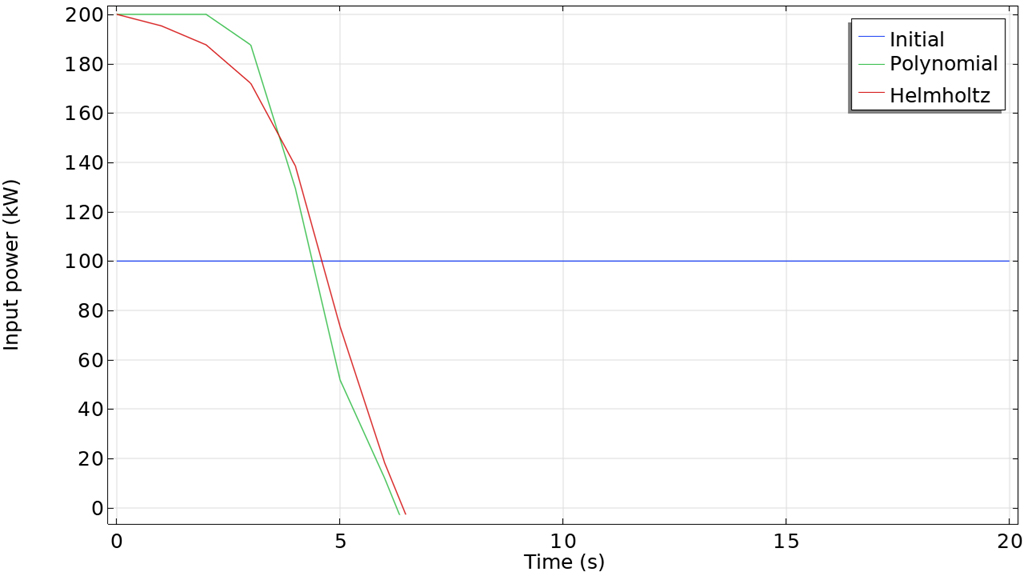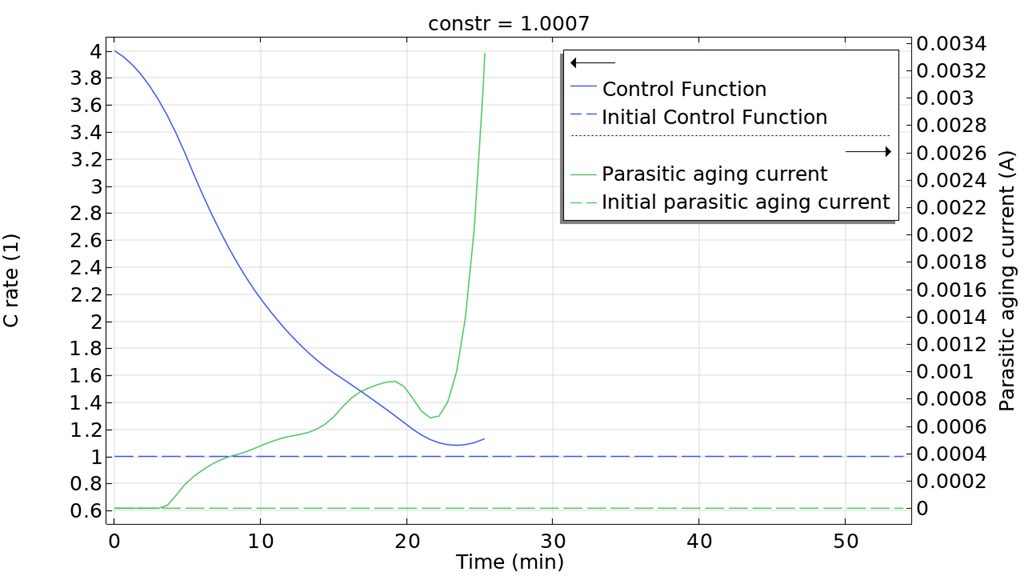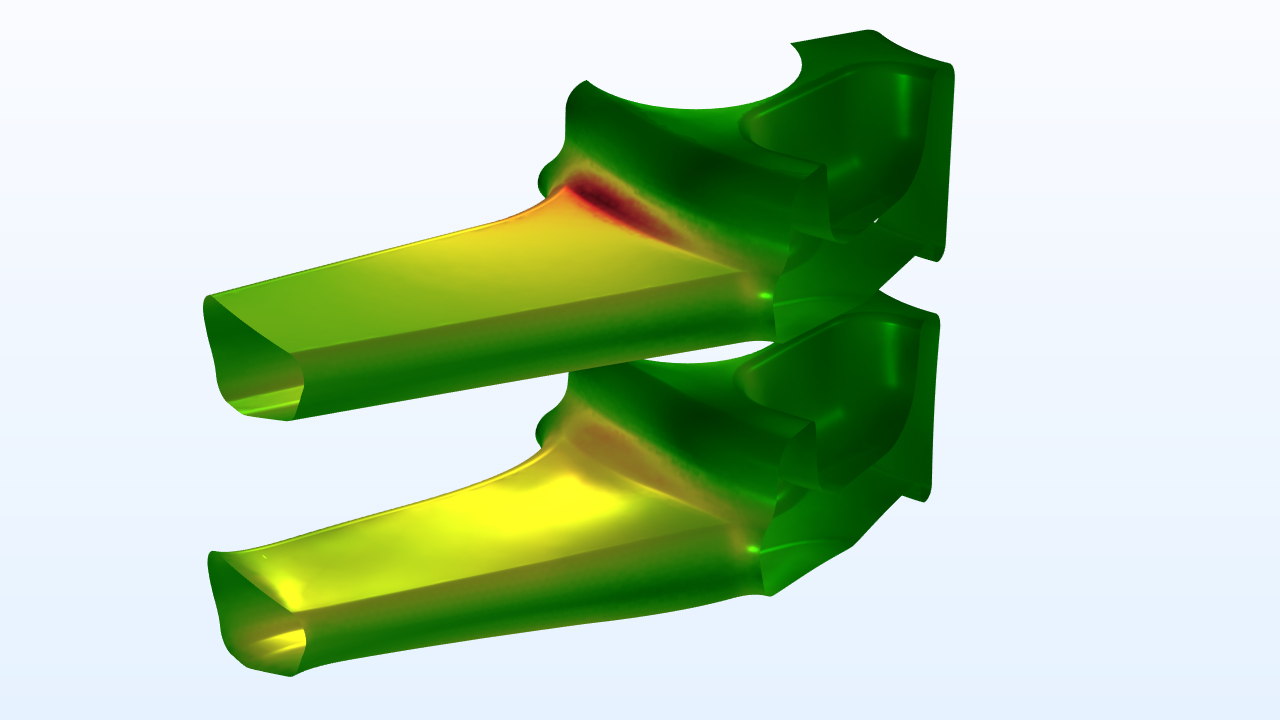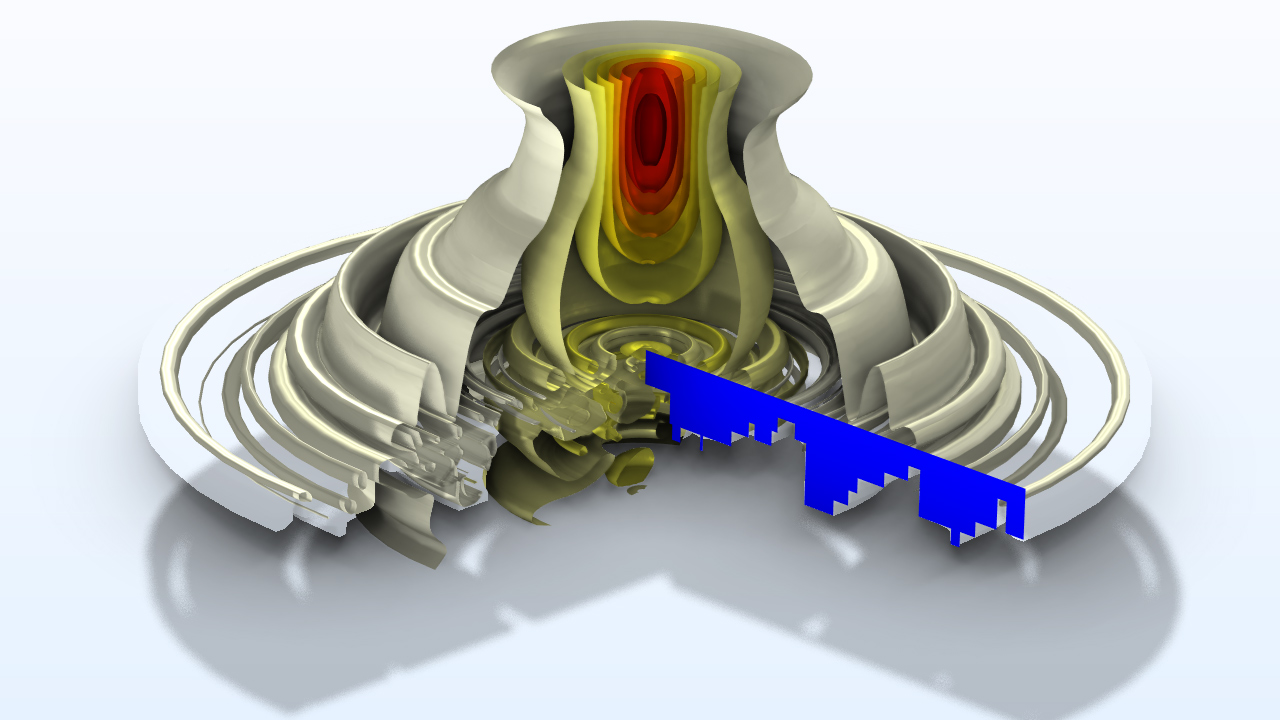Optimization Module Updates
For users of the Optimization Module, COMSOL Multiphysics® version 6.4 introduces stop conditions for time-dependent optimization, a Parameter Optimization study step, and several new tutorial models. Read about these updates and more below.
Time-Dependent Optimization
Gradient-based optimization for time-dependent problems can now also be used to optimize the final time. This means it is possible to either minimize how long a process takes or let the solver choose the time that gives the best objective value. In the example below, the goal is to minimize the charging time for a lithium-ion battery. The model uses the Control Function feature, which now supports exporting the optimized result as either an analytic function or an interpolation function.
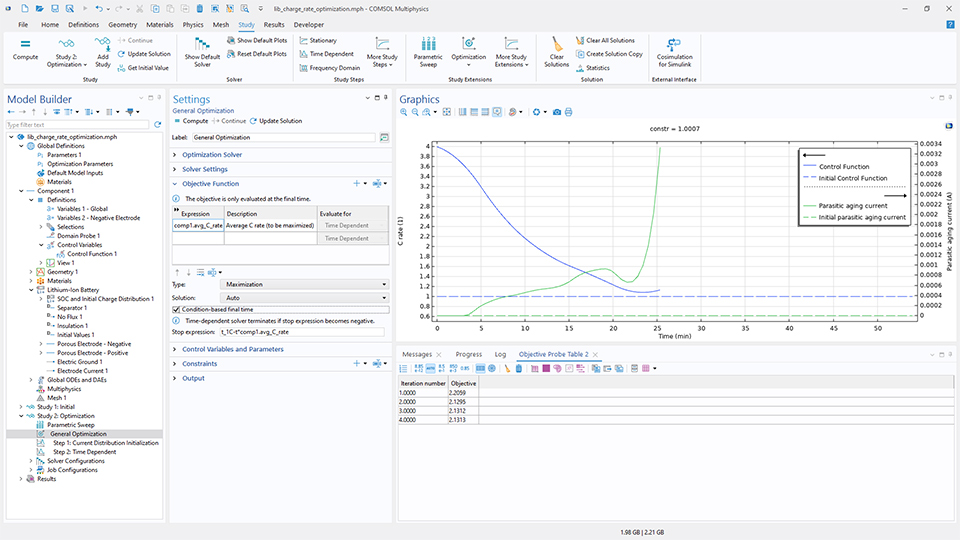
Parameter Optimization
A Parameter Optimization study step designed specifically for gradient-free optimization has been introduced where the control scales are set based on the bounds, removing the need for manual definition. The feature also supports automatic creation of new parameter cases based on the optimized parameters.
Additionally, the user interface has been reorganized relative to the old Optimization study step, which has been renamed General Optimization. The General Optimization study step and the Parameter Optimization study step both support randomization of the initial values for bounded global controls so that different local minima can be identified.
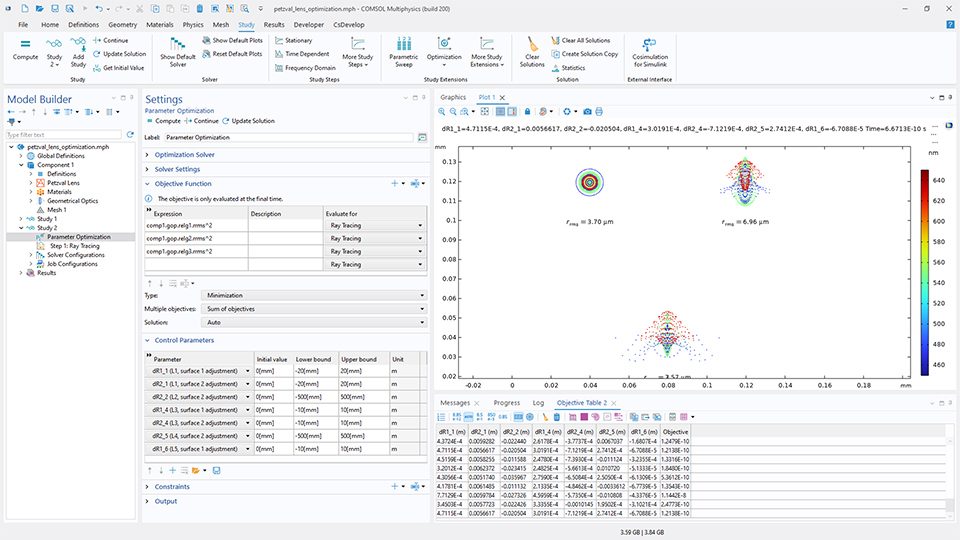
Gradient-Based Optimization Solvers
The SNOPT optimization solver has been discontinued; old models have been migrated to IPOPT, which is now the recommended way to achieve quadratic convergence (except for parameter estimation, where the Levenberg–Marquardt solver is expected to be superior). Additionally, choosing the MMA option in an optimization study step used to trigger the use of GCMMA (for the default solver configuration), but now both MMA and GCMMA are available at the study level.
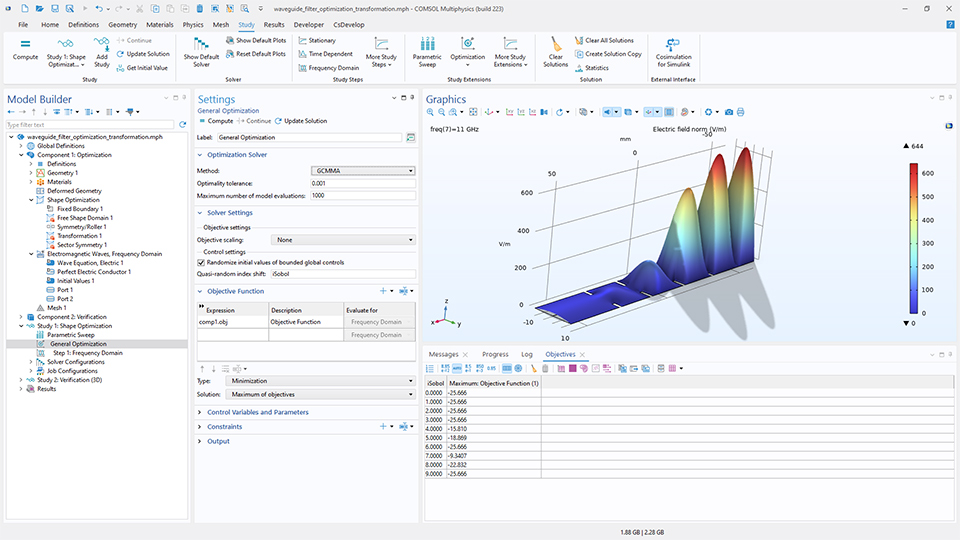
Miscellaneous New Features and Improvements
- New P-norm and Standard Deviation features:
- The P-norm feature can approximate the maximum value of a field in a way that is compatible with gradient-based optimization, as often used for stress constraints in structural problems.
- The Standard Deviation feature can be used to homogenize a field over a selection.
- Far-field operators compatible with gradient-based optimization have been added to the Electromagnetic Waves interface.
- Optimization of eigenvalues now supports the use of nonanalytic operators in the objective expression so that it is possible to design for a target eigenfrequency considering only the real part.
- Support for extrusion constraints has been added to the Density Model feature.
- Performance improvements have been made for gradient-based optimization.
New and Updated Tutorial Models
COMSOL Multiphysics® version 6.4 brings several new and updated tutorial models to the Optimization Module.
Time-Optimal Control for Heating of a Rod
Designing a Metasurface Beam Deflector Using Shape Optimization
metasurface_beam_deflector_optimization
Download from the Application Gallery
Minimizing the Charging Time of a Lithium-Ion Battery
Aperture Shape Optimization for Electroplating of a Printed Circuit Board
Wheel Rim — Stress Optimization with Fatigue Evaluation
Topology Optimization of a Metalens
Minimizing the Drying Time of a Wood Particle
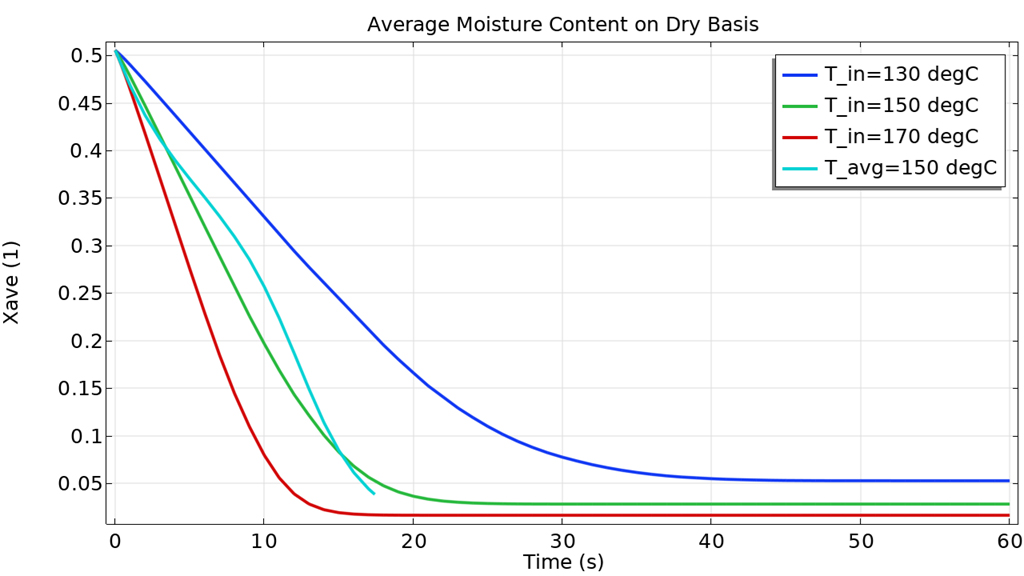
superheated_steam_drying_optimization
Download from the Application Gallery

